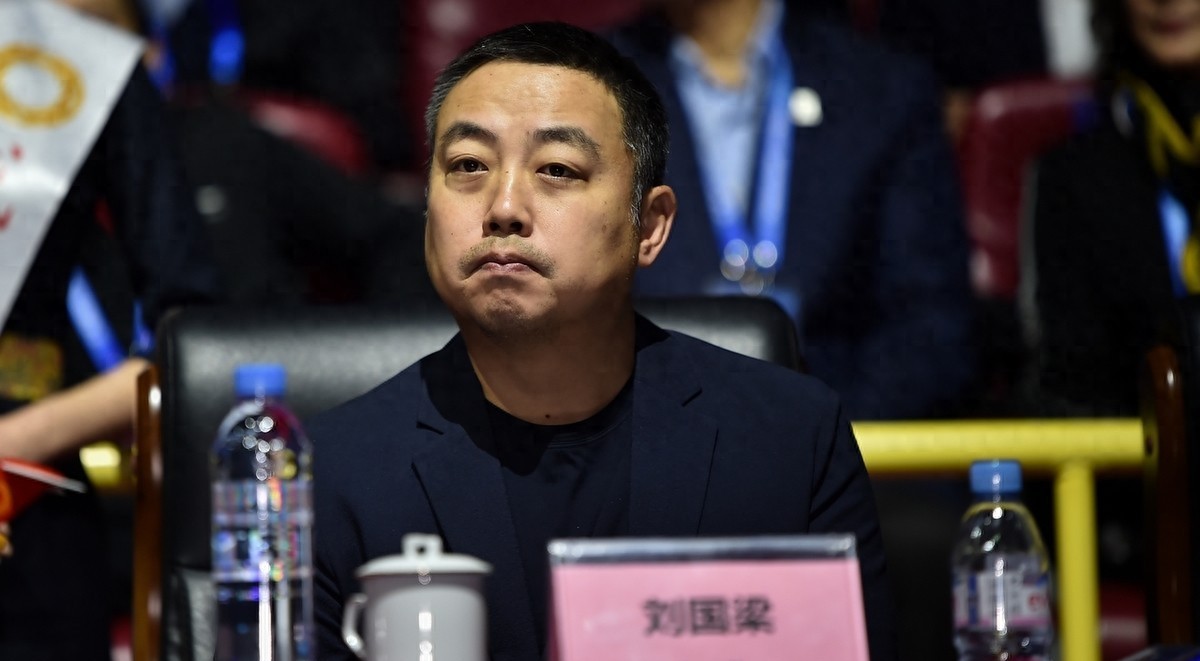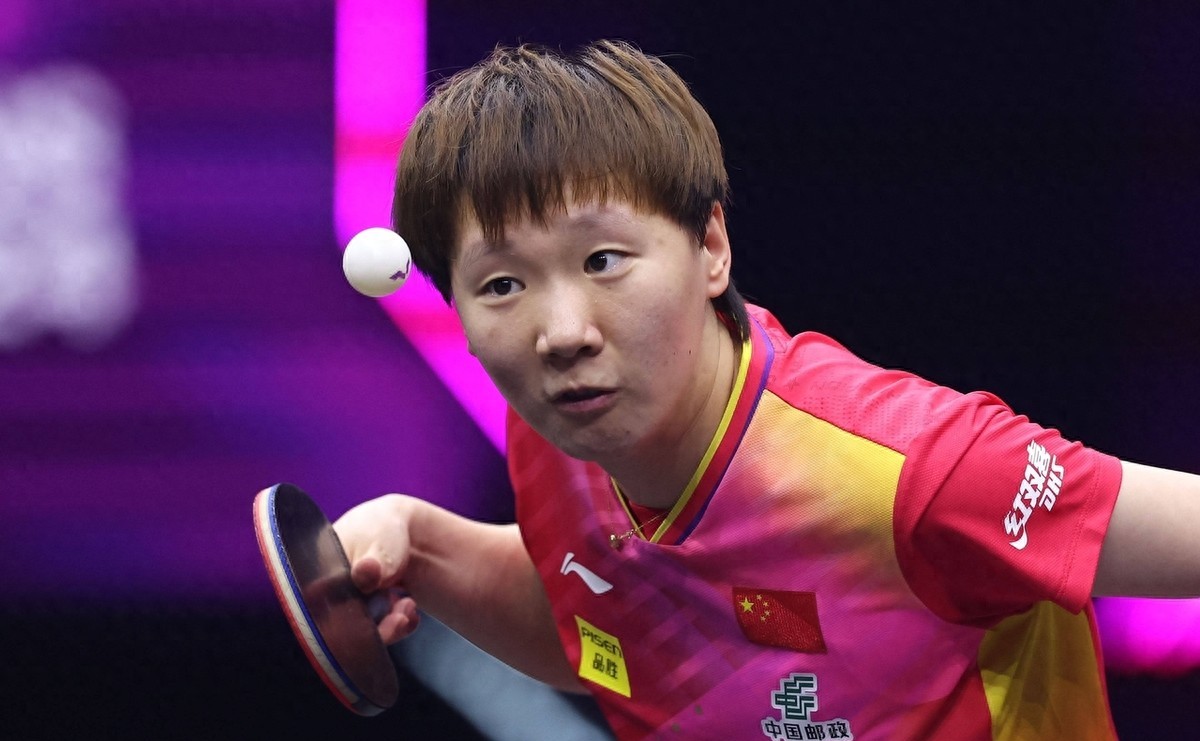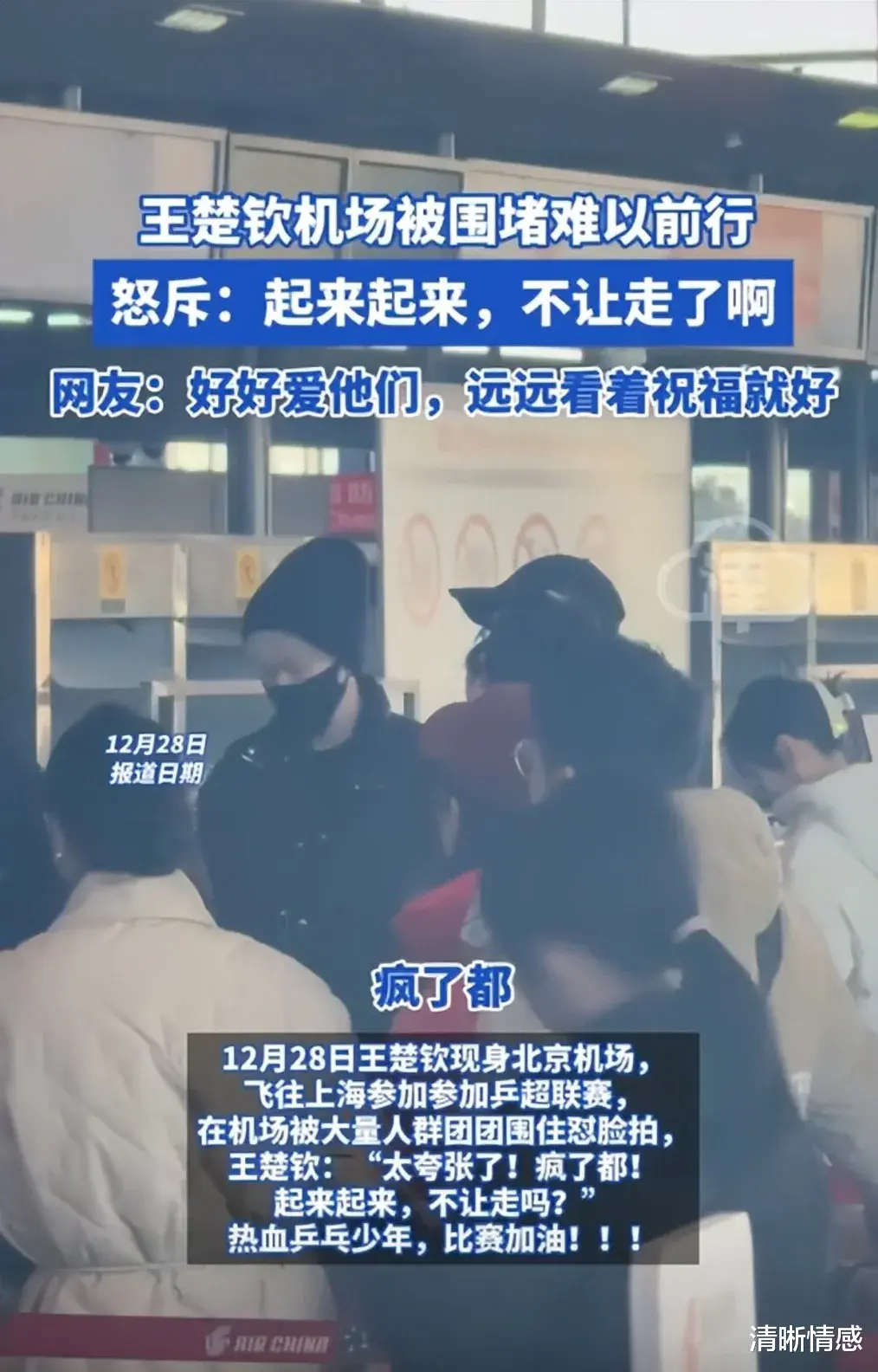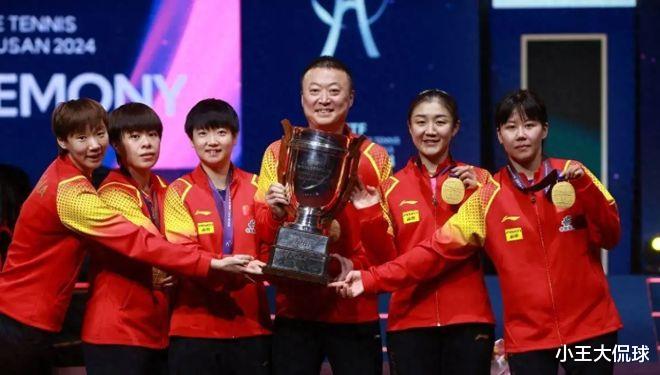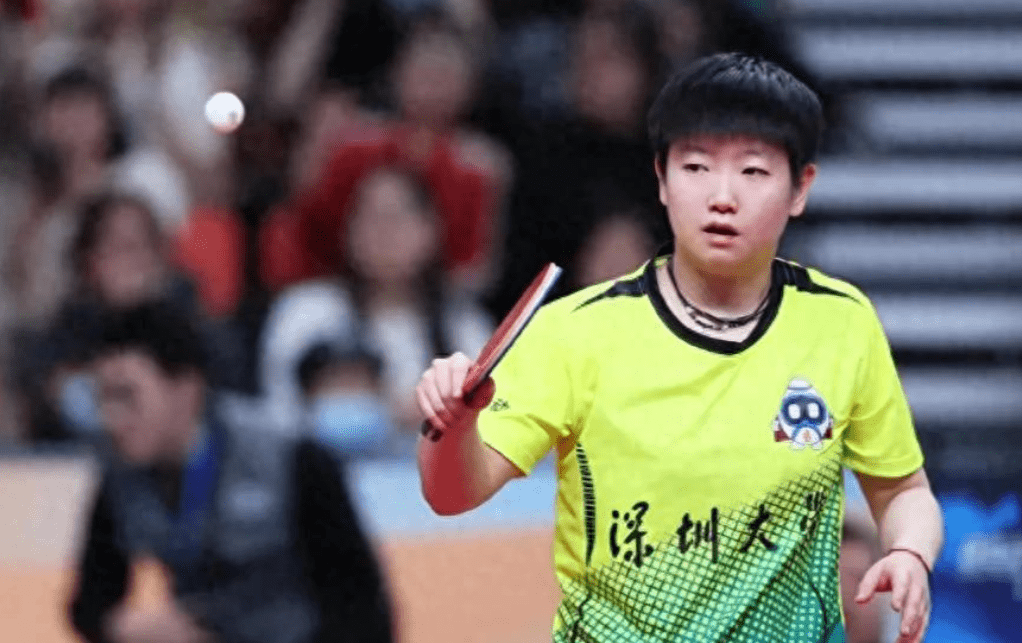In the world of professional athletes, finding a balance between competition pressure and physical health is akin to walking on a tightrope, where one misstep could lead to disaster. This is especially true for table tennis players, who face the challenges of commercialization and significant prize money disparities. Did you know that top players like Fan Zhendong and Chen Meng have had to take a temporary break to "rest and recuperate"? What lies behind this decision? Let's delve into the story! For professional athletes, how to find a balance between physical health and competition pressure is a challenge they must confront. It is obvious that if an athlete remains in high-intensity training and competition for an extended period, their physical functions will rapidly decline. They are like machines running at full capacity, with a significantly increased likelihood of failure. On the other hand, if the training intensity is insufficient, it becomes difficult for athletes to maintain peak performance during competitions, which can lead to a decline in technical proficiency and impact the development of their careers. Finding the right balance between these two extremes is a question all athletes must ponder. Professional table tennis competitions have entered a highly commercialized phase. The WTT (World Table Tennis) as a professional league has achieved ticket sales of nearly 60 million yuan, with the commercial interests of event organizers growing day by day. While professional competitions provide athletes with a platform to showcase themselves, they also bring immense pressure. The disparity in prize money distribution between table tennis and tennis players is particularly…
Resigning from the Table Tennis Association? Liu Guoliang Responds, Decision Exposed, 2025 Becomes Key, Ma Lin Supports
Recently, a series of eye-catching events have occurred in the national table tennis scene. The actions of renowned players such as Fan Zhendong, Ma Long, and Chen Meng withdrawing from the world rankings have caused significant ripples, intertwining with various issues and plunging the entire table tennis community into a complex whirlpool of public opinion. As the head of the Chinese Table Tennis Association, Liu Guoliang's stance on this matter is clear. He expressed absolute support for the players' efforts to protect their own rights, reflecting his respect and protection for athletes' rights. However, the situation has not been simplified. Due to the connection between WTT's system and these players' actions, Liu Guoliang, also the head of WTT, faces significant challenges. After all, the athletes' actions are like a sword pointing at the WTT system, and he needs to balance various interests while considering how to optimize the system to ensure both the protection of athletes' rights and the good development of WTT. The situation of the International Table Tennis Federation has also become complicated. Vice President Liu Guoliang of the International Table Tennis Federation has become the center of the storm. Many well-known journalists' requests for the International Table Tennis Federation to disclose financial reports are not groundless. The International Table Tennis Federation owns an 85% stake in WTT, but the low bonuses offered by WTT, high self-income, and annual losses are difficult to understand. This is like a huge puzzle, with Liu Guoliang at the center of it. In this context, the saying "To wear the crown, one…
The Fall of National Table Tennis? World No. 1 Changes Hands! The Shocking Inside Story Behind the Collective Withdrawal of Olympic Champions
Recently, the International Table Tennis Federation announced the latest world rankings, which came as a shock to Chinese fans. Among the five individual events, China holds three top spots, but has lost one world number one ranking compared to the previous period. What is going on here? What secrets lie behind this? In men's singles, Wang Chuqin and Lin Shidong maintain their top two positions, with Wang Chuqin leading as expected. Lin Shidong, however, has climbed to second in the world after winning five singles titles following the Paris Olympics, including the grand slam title in China. Liang Jingkun and Lin Gaoyuan are ranked fifth and ninth, respectively. Notably, Japanese player Zhang Ben Zhihe is ranked third, followed by French player Xiaolei Lun and other European contenders. In women's singles, Sun Yingsha continues to lead, with Wang Manyu, Wang Yidi, and Chen Xingtong ranking second to fourth, showcasing the strength of the national women's team. Japanese players Hina Hayata and Miyuu Higa are close behind, occupying fifth to seventh places, with competition remaining fierce. In mixed doubles, the Olympic champion pair of Wang Chuqin/Sun Yingsha remains firmly at the top. The Lin Shidong/Kuaiman pair ranks third, while the Lin Gaoyuan/Wang Yidi pair ranks eighth. However, there is bad news in both men's and women's doubles! In men's doubles, the French Lebrun brothers topped the world rankings after winning the year-end finals, with the Chinese pair of Xiang Peng/Yuan Licen finishing second. More shockingly, the national table tennis women's doubles pair has lost its world number one ranking! The previously leading…
Recently, the final of the Ping Super League has been a hot topic, and the incident involving Wang Manyu has left many scratching their heads. How did a small controversy on the court escalate into such a situation? What exactly is going on? Let's start with the match itself. Wang Manyu raised a question about Tan Yuexuan's second jump, which is allowed by the rules, right? It wasn't intentional nitpicking, so why did it attract so much criticism? Even worse, after the game, three women chased her, hurling insults and even appearing ready to get physical! This is unacceptable. The club had to send bodyguards to escort her, a scene that sends chills down one's spine. This isn't just watching a game; this is causing trouble! The internet has erupted in outrage against these so-called "fans." What kind of fans are they? We should consider that Wang Manyu is also an ordinary person. Even as an athlete, she shouldn't have to endure such inhumane treatment. Athletes are people too, with their own emotions and feelings. They need respect, not cyberbullying! Moreover, even if Wang Manyu made a mistake during the match, does it warrant personal attacks? That goes against the spirit of sportsmanship! Some say that Ma Long also "interrupted" his opponent's rhythm during the Rio Olympics final and even went out to change clothes mid-game, yet no one criticized him. The reason is simple: he followed the rules. So what's the deal with these people now? Do they not understand the rules or are they deliberately looking for trouble?…
The Anti-Corruption Storm in National Table Tennis: Who's Messing with the "National Game"?
Recently, the table tennis world has been buzzing with excitement! Fan Zhendong and Chen Meng withdrew from the competition, CCTV supported them, and the WTT rules were questioned... What's really going on behind all this? Is it just a simple dispute over the rules? Let's start with these WTT rules. The top 100 players in the world must participate in their competitions; otherwise, they will lose points, affecting their world rankings and, in turn, their eligibility for the three major events. Think about it; this is practically a "tyrannical clause"! How can a commercial event be so closely tied to the qualifications for world-class competitions? It's hard to believe there isn't more to this story. This isn't just a matter of the rules themselves; the creation and enforcement of these rules are closely related to Liu Guoliang's multiple roles, which raises suspicions. Liu Guoliang serves as the Chairman of the WTT World Table Tennis Corporation Board, President of the Chinese Table Tennis Association, and First Vice President of the International Table Tennis Federation, holding several positions at once. Isn't that a bit too much power for one person? It's like having one person control legislative, judicial, and executive powers; how could that not be concerning? In the past, athletes have raised doubts, but nothing came of it. This time, it's different. Two Olympic champions withdrew simultaneously, and it's a big deal that the global media is paying attention to! CCTV even stepped in to voice its concerns about the WTT rules. Liu Guoliang responded, saying that the rules do need…
Xinhua News Agency announced the list of the top ten domestic athletes for 2024, and as a fan who has been watching table tennis for over thirty years, I am filled with mixed emotions. Wang Chuqin, the leader of the new generation, was unexpectedly left out, which made me think deeply about the reasons behind it. Let's talk about Wang Chuqin's performance this year. At the Paris Olympics, he and Sun Yingsha partnered to win the mixed doubles gold medal, creating history for the Chinese table tennis team. This gold medal is not light in weight; it fills the gap in the Olympic mixed doubles event for the national team. Their默契配合 on the court and their fighting spirit made us old fans' blood boil. He also contributed significantly to the national team's successful defense of the title in the team event. Unfortunately, in the men's singles competition, Wang Chuqin failed to maintain his previous good form and was eliminated in the knockout stage, which is indeed a great pity. Men's singles has always been the most important event in the international table tennis arena, with particularly high value. This setback undoubtedly affected his selection results. I noticed that Wang Chuqin's popularity has been skyrocketing. A few days ago at the Shanghai airport, he was surrounded by a large number of fans. Even though he was fully equipped, he was still recognized by sharp-eyed fans. Seeing him surrounded like that, I couldn't help but say, we should pay more attention to his matches! Ma Long was able to be selected into…
Arrest of Gou Zhongwen, Who Previously Competed with Cai Zhenhua for Position, Also Affects Liu Guoliang and Cai Zhenhua
Recently, the sports circle has been hit by a piece of breaking news: Gou Zhongwen, who once served as the director of the General Administration of Sports, was arrested on December 19, 2024. This is the highest-ranking official ever arrested in the sports circle. With Gou Zhongwen's arrest, his previous actions have also been exposed, involving many people, including familiar figures like Liu Guoliang and Cai Zhenhua. So, why was Gou Zhongwen arrested, and how did Liu Guoliang and others get affected? Gou Zhongwen's career path shows that he had achievements in his field, but initially, he worked in electronics and information technology. In 2008, he was transferred to Beijing to serve as the vice mayor, and in 2016, he became the deputy secretary of the Beijing Municipal Committee and the director of the General Administration of Sports in October of the same year. At that time, Cai Zhenhua also competed for this position. Cai Zhenhua, a former national table tennis player, won championships in multiple world table tennis championships. He had a deep understanding of events and the sports industry, leading many to believe that the director's position would be his. After retiring, Cai Zhenhua served as the head coach of the national table tennis team, training many outstanding players and contributing significantly to China's sports. In 2007, he became the deputy director of the General Administration of Sports, just one step away from the director's position. Many thought Cai Zhenhua would get it, but after intense competition, Gou Zhongwen won. However, Gou Zhongwen had no prior experience in…
Situation Escalates! Fan Zhendong Appears on CCTV13, Supported by CCTV Journalists, Liu Guoliang Makes First Public Appearance After Controversy
Situation Escalates! Fan Zhendong Appears on CCTV13, Supported by CCTV Journalists, Liu Guoliang Makes First Public Appearance After Controversy "Non-participation means fines," does that sound familiar? On the surface, it seems like a tactic used by some companies to force employees to work overtime, but you might not have expected that behind this is a group of top table tennis players experiencing "the 996 version of the sports field." The protagonist of this "big show" in 2023 is Fan Zhendong, the "big brother" of the national table tennis team. Recently, Fan Zhendong chose to "stand firm" due to his dissatisfaction with the WTT (World Table Tennis Professional League) mandatory participation penalty regulations and announced his withdrawal from the world rankings. This was followed by another legendary player and Olympic champion Chen Meng's support for the team, directly abandoning the "golden signboard" of the "ranking." The table tennis circle exploded! Such a "double bomb" not only sparked discussions in the sports world but also made many fans start to think: Behind professionalization, is it for the good of the athletes, or is it a shackle that harms their interests? Table tennis players who do not participate in competitions will be fined? This is straightforward and is one of the current rules of WTT. This rule requires top players to participate in competitions; otherwise, they face not only high fines but also the possibility of losing their world ranking. It sounds like encouraging more competitions and enhancing the heat of the arena, but upon careful consideration, the problems behind this are not…
Annual Best Female Athlete Announced, Quan Hongchan Second, Zheng Qinwen Third, No Surprise for First
The year 2024 has been a fruitful one for Chinese sports. Our athletes shone brightly at the Paris Olympics and continued to deliver impressive results in various top-tier international competitions. Sports such as tennis, diving, golf, and track and field, which were once considered niche, have now become hot topics of public discussion. Behind this success lies the relentless efforts and dedication of countless athletes. Let's start with Sun Yingsha, an extraordinary young table tennis player who has become a world-class athlete. Known as a prodigy, few are aware of the immense effort she puts into her craft. With thousands of swings each day, sweat soaking through her clothes, she never complains about the hard work. It is this persistence and dedication that allows her to create miracles on the court time and again. Moving on to Quan Hongchan, the rising star of the diving world. Her every dive is executed with perfection, as if dancing in the water. But do you know how much sweat and tears she has shed for these moments? Hundreds of dives each day, giving it her all every single time, all for that split second of perfection. Her story teaches us that there are no shortcuts to success. Zheng Qinwen and Yin Ruoning also impressed with their performances on the golf course. Not only are they highly skilled, but they also possess an indomitable fighting spirit. Facing formidable opponents and adverse weather conditions, they never retreat, always standing firm on the field and proving themselves with their abilities. Gold medals are undoubtedly the best…
The True Situation of Wang Manyu, Exposed by Chen Xingtong, While Sun Yingsha's Fans Seek Justice
"Is it really only about strength on the court?" A pivotal match in the Ping Pong Super League has brought this question to the forefront. Shenzhen University faced off against Shandong Luneng, with Sun Yingsha and Wang Manyu, two absolute mainstays of the national women's team, engaging in a peak confrontation in singles play. The match was full of ups and downs, but the final result was intriguing - Sun Yingsha staged an astonishing comeback after trailing 0-2, winning three consecutive sets. However, behind this seemingly perfect reversal lies controversy. The umpire's decisions, fan bias, and media clashes... This match transcended the realm of "competition" and became a topic of social discussion. Sun Yingsha's victory can be considered classic. In the first two sets, Wang Manyu started like a house on fire, firmly controlling the rhythm of the game. Sun Yingsha, on the other hand, seemed not to have fully entered her stride, making successive mistakes that quickly widened the score gap. When the score reached 0-2, the spectators almost unanimously believed that Wang Manyu would take the match without a hitch. However, the real turning point began in the third set. Sun Yingsha gradually found her touch, returning the ball more accurately and handling the receiving end more delicately. Especially in the critical third set, the score once reached a tense 10-all, with almost every rally gripping the nerves of the audience. Ultimately, Sun Yingsha secured the decisive point with a sideline shot, locking in the victory. The reason this match was so thrilling is not only due to…


